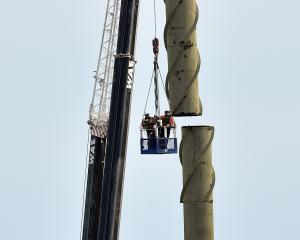
Its Port Chalmers terminal handled a record 269,999 TEU (twenty-foot equivalent units), which included 104,000 transships units, and total throughput was 44% higher than last year. To manage the additional volume, 16 new cargo handlers were recruited, chairman Tim Gibson said.
Cruise vessels contributed an estimated $90m to the region’s economy; 118 vessels, carrying 272,000 passengers and crew, were received, Mr Gibson said.
There would be 20% less cruise ships calling this season as cruise lines repositioned vessels to higher-yielding markets offshore, as New Zealand became a high-cost destination.
That was disappointing for local and regional tourism providers who had had a tough few years battling through Covid. The port was engaged with cruise lines to promote the value of visiting Fiordland and Otago, aiming to win back business in the medium term, he said.
The port measured its business on an underlying profit basis and the underlying result was $34.4m, up 7% on last year’s $32m result.
The company paid an annual dividend of $16m to its shareholder, the Otago Regional Council.
Another noteworthy feature of this year’s result was it included a $47m investment into developing port and property assets, which was done without increasing its borrowing and while continuing to meet its dividend commitment to the ORC, Mr Gibson said.
"In the future, we will continue investing to remain resilient and profitable. We know what’s coming and that is increasingly severe impacts of climate change on our coast and the need to reduce our carbon emissions.
"Proactively investing in mitigating these risks and accommodating future shipping demands is not a ‘nice-to-have’. It is essential," he said.
Bulk cargo volumes were down marginally from 1.77million tonnes to 1.7million tonnes, while log export volumes remained consistent at 1million tonnes. Fertiliser volumes were down to 87,000 tonnes compared to 138,000 tonnes last year.
Group revenue was up significantly on last year at $133m, compared to $111.3m, while operating expenses were up 12% to $87.5m, which was largely attributed to increased wages associated with a new shift model introduced to handle the increased container throughput.
Rental income from the investment property portfolio increased 15% to $30.3m.
Looking ahead, Mr Gibson said tougher economic conditions would continue to challenge the region’s economy.
"We expect export volumes to reduce as some sectors struggle to pass on increased costs, and imports to stay at low levels."
There was significant activity at an operational level, including replacing ageing railway infrastructure and upgrading the cruise terminal at Port Chalmers.
The port was also investing in strengthening the Aramoana Mole.













